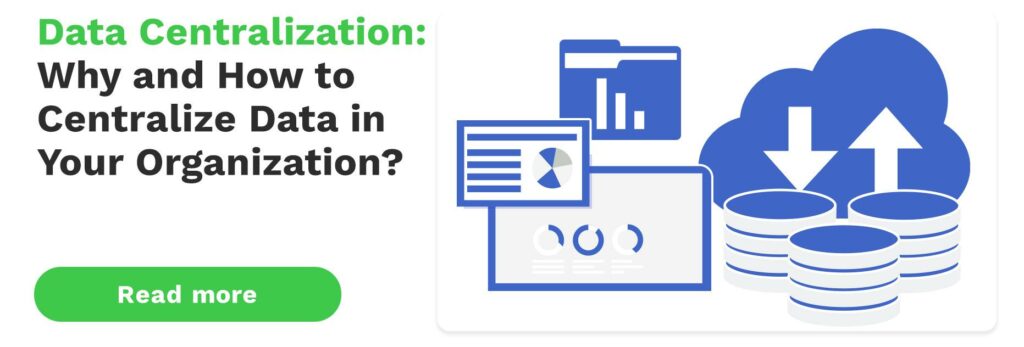Why do organization bloat their technology stack?
Organizations tend to bloat their technology stack due to various factors, including the pressure to keep up with emerging technologies, the absence of a clear technology strategy, organizational silos, acquisitions changing priorities. The desire to adopt the latest and greatest tools often leads to the accumulation of redundant and overlapping technologies, resulting in increased costs, reduced employee productivity, and heightened cybersecurity risks.
When different departments within an organization operate in silos, they tend to invest in their own technology solutions, leading to a fragmented tech stack. Acquisitions can also contribute to tech stack bloat, as organizations often inherit the technology tools of the companies they acquire.
Reasons many companies accumulate bloated tool stack
1. Lack of knowledge of other tools
When companies are not aware of all the features available to them in a tool they already have, they may end up purchasing another tool to solve a problem that could have been addressed by the existing tool. This lack of knowledge can contribute to the accumulation of point tools and result in technical complexity, reduced productivity, and poor ROI.
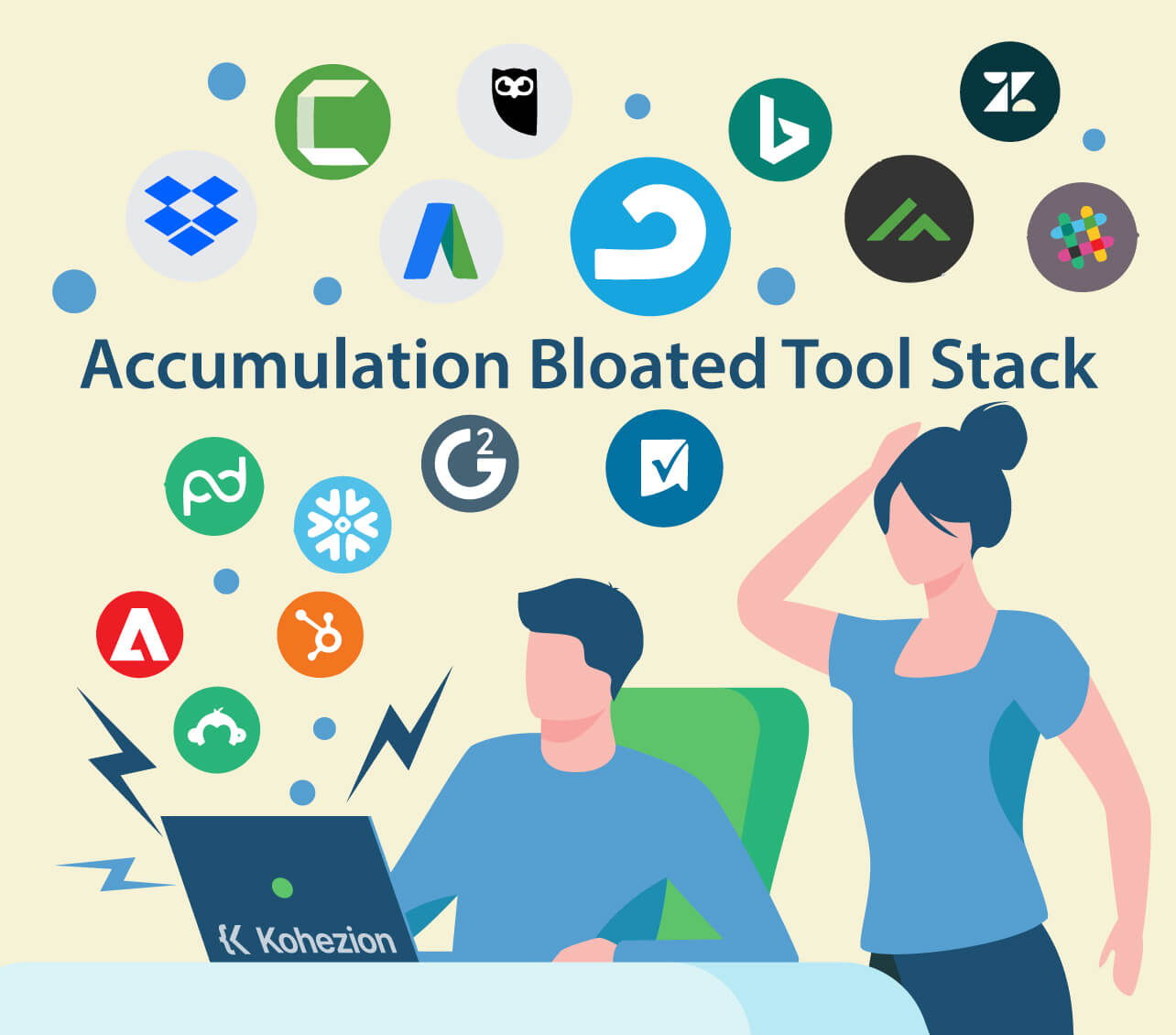
2. Need for different tools for different teams
Different teams within a company may require different tools because they have different needs and goals. For example, a sales team may need a CRM tool to manage leads and track sales, while a marketing team may require a social media management tool to schedule and analyze their campaigns. Likewise, an HR team may require an applicant tracking system to manage hiring and onboarding processes, while a finance team may need accounting software to manage financial transactions and generate reports. As a result, each team may end up adopting different tools to meet their specific requirements, leading to a bloated tech stack.
3. Poor training
Poor training contributes to bloated tool stack accumulation in companies in several ways. When employees are not properly trained on how to use a particular tool, they may turn to other tools that they are more familiar with or that they think will be easier to use.
We'll buid your first application for you. At no extra cost.
Let us build your first business application for free. Go from an idea to an application in under 2 weeks.

Reasons to consolidate your technology stack:
1. Increase efficiency and productivity
Increase your work force's efficiency and productivity. By reducing the complexity of managing multiple tools and platforms, you can simplify processes, minimize the time and effort required for maintenance and updates, and free up valuable resources to focus on core services.
2. Create a more cohesive team
Create a more cohesive team by ensuring that everyone is aligned and working towards the same goals. Eliminate the use of too many tools and shadow IT groups, and you'll reap cost savings and more efficient workflows.
3. Increase business agility
Adapt quickly to market changes and seize new opportunities. Streamlining your tools and platforms can unlock substantial cost savings, which can be reinvested into initiatives that drive business expansion, such as marketing campaigns, service improvements, localized products, or strategic partnerships. This can also empower your team to focus on creative solutions and develop cutting-edge services that set you apart from competitors, ultimately propelling you ahead of the competition.
4. Increase security and safety
Improve overall security of your stacks. Consolidation can also improve your security posture by providing a fully integrated platform that offers expanded protections and reduces operational inefficiencies.
5. Increase data accuracy
When you have multiple tools and platforms in your tech stack, data can become fragmented and inconsistent, which leads to errors and a lack of synergy between different teams. By consolidating your tech stack, you can simplify processes and standardize data across your organization. This makes it easier to manage and maintain data and reduces the risk of errors or discrepancies.
6. Increase customer satisfaction
With all customer information in one place, customer service representatives can quickly access relevant data and provide personalized and efficient service. This can lead to faster issue resolution, improved communication, and increased customer loyalty. A centralized system provides a more holistic view of the customer journey, allowing for better insights and opportunities for upselling and cross-selling.
7. Increase revenue and profits
Lead to a significant increase in revenue and profits by reducing costs, streamlining operations, and improving customer experience. For example, according to a survey conducted by InsightSquared, tool proliferation hurts sales execution, and optimizing a few tools for success is the current trend. By eliminating redundancies and consolidating disparate products into one unified platform, you can reduce costs, make the sales process more efficient, and gain invaluable insights about your customers.
Additionally, using an all-in-one platform can further streamline business operations, automate repetitive tasks, and improve collaboration among team members, allowing teams to focus on delivering exceptional services and driving business growth. By reducing your total cost of ownership and helping drive quicker ROI, consolidating your tech stack can revolutionize your service business's financial performance, paving the way for growth and innovation.
How to create a centralized "source of truth" for your technology stack?
Step 1: Establish a good working relationship with your IT team
Establishing a good working relationship with your IT team is crucial to creating a centralized "source of truth" for your technology stack. To do this, consider forming an internal alliance with your IT department and leverage their expertise in technology. They can provide a technical perspective on how well new solutions will integrate with existing systems, whether they are safe, and if they will make your team more efficient.
Once you have established this partnership, it's important to get feedback from your team before implementing any new tools.
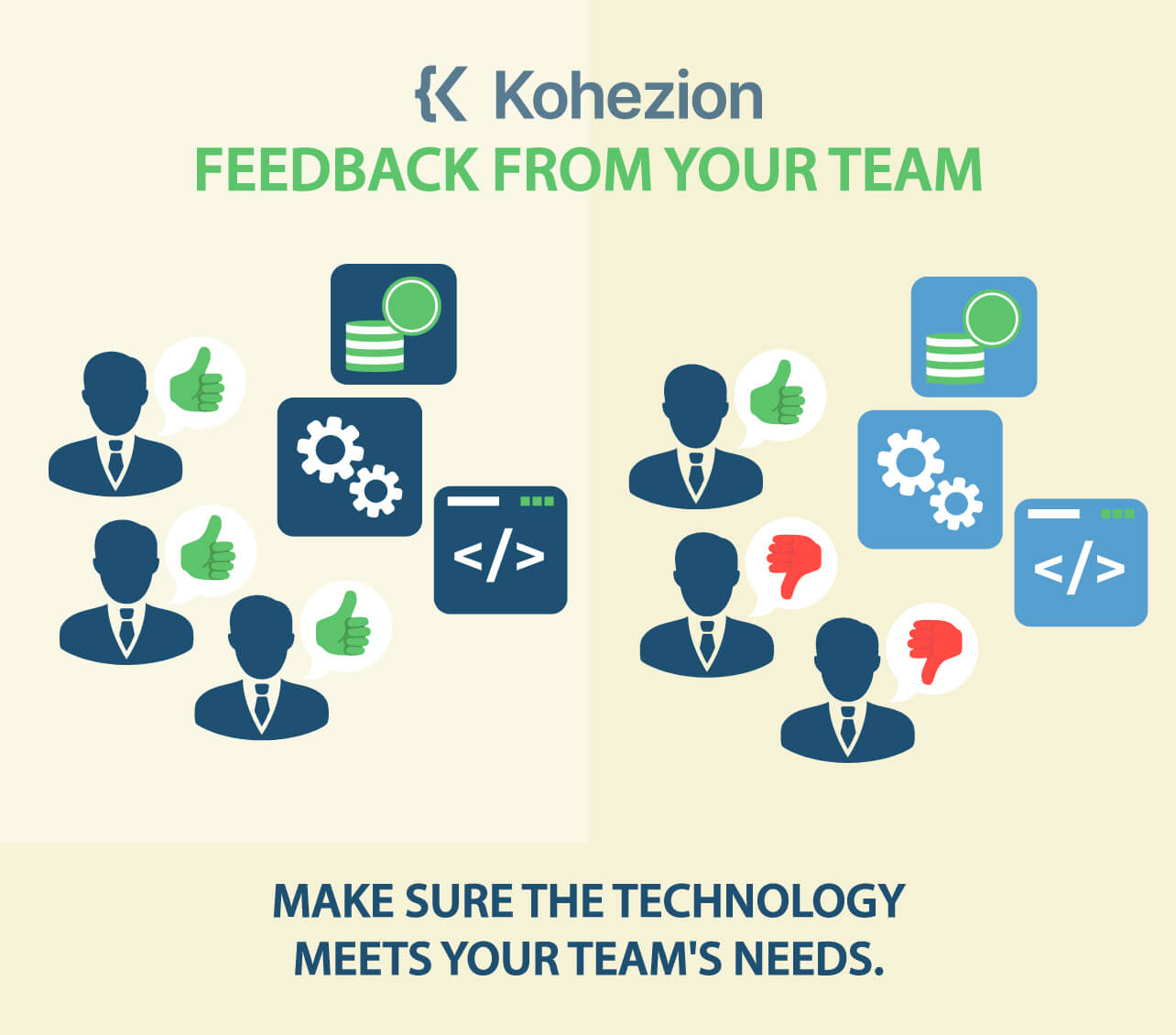
After selecting the appropriate tools, monitor your new tech stack to ensure it works for your team. Do your reps enjoy the tools you've chosen? Are you still able to close deals at a consistent clip? If necessary, make adjustments to ensure the technology is meeting your team's needs.
Finally, when migrating data and training users to use your new solutions, take advantage of the thorough training offered by most software apps through YouTube videos, live webinars, and blog posts. Remember that a solid IT framework is more important than ever in remote and hybrid arrangements, and consolidating tools and vendors is key to getting more done across organizations.
Step 2: Outline objectives, move to strategies, then to tactics… and finally tech
When creating a centralized "source of truth" for your technology stack, it's important to follow a clear and organized process. Here's a concise guide on how to outline objectives, move to strategies, then to tactics, and finally to technology:
- Start with Objectives: Identify what you need to achieve, such as increasing customer retention or driving business growth.
- Move to Strategies: Determine how you're going to achieve your objectives, such as through online poster designs, targeted email campaigns or personalized website experiences.
- Consider Tactics: Decide on the specific actions and activities you'll need to take to implement your strategies, such as A/B testing or content creation.
- Look at Technology: Once you've established your objectives, strategies, and tactics, you can evaluate which technologies will help you achieve them. This is the time to consider software solutions that align with your goals and can support your strategies and tactics.
Step 3: Identify redundancies and ensure compatibility & integration
To identify redundancies in your technology stack, start by looking for apps that accomplish similar tasks. Consider whether you need both and whether your CRM can handle the task. Consolidating your tech stack can lead to dramatic reductions in software expenses. To ensure compatibility and integration, verify that the SaaS solution can be seamlessly integrated with your existing tools and platforms. Make sure the solution can synchronize data across your tech stack and choose a solution with a user-friendly interface.
To create a centralized "source of truth," map out every impacted process, create new fields, and eliminate outdated or repetitive fields. Protect important salesforce reports and understand tech stack dependencies and how they may be impacted. Finally, update any important integrations and uninstall outdated ones and give everyone on the team the access they need to the right platforms.
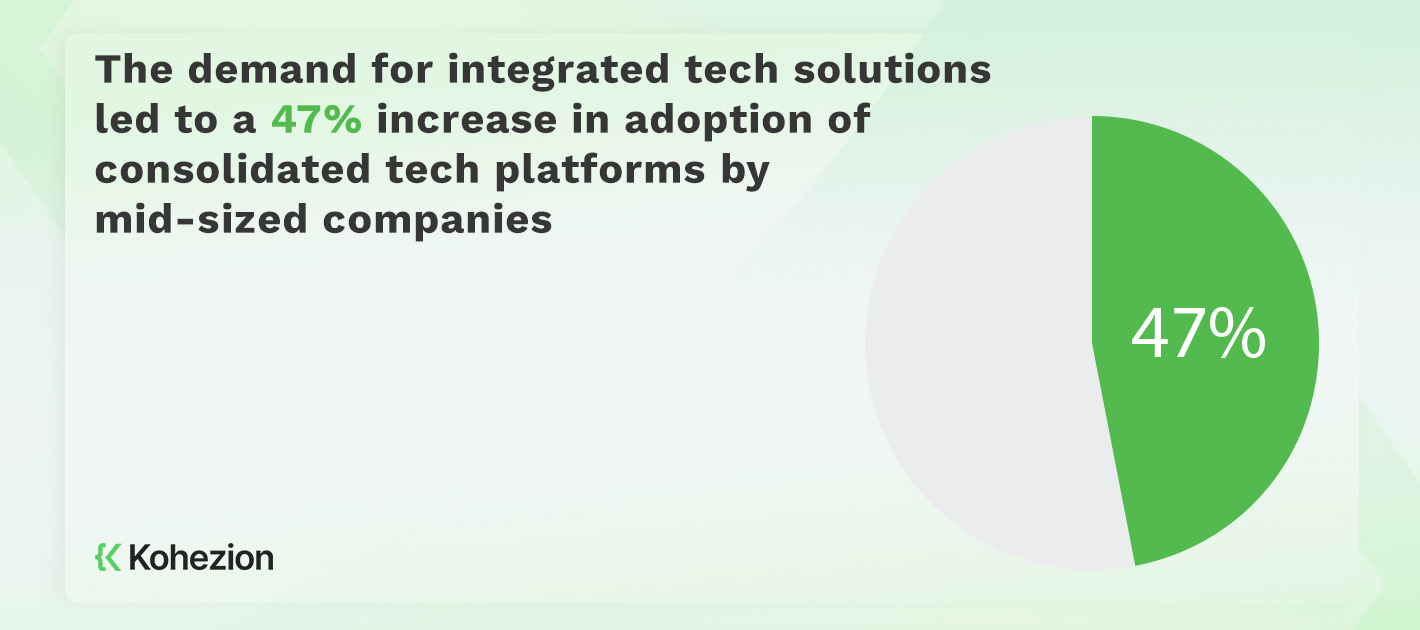
Step 4: Create a consolidation plan
Consolidating your technology stack into a centralized "source of truth" can lead to significant cost savings and increased efficiency. The first step is to identify redundancies and inefficiencies in your current stack. This can be done by consulting with your team and reading software reviews on sites like G2 and Capterra. Engaging with chief technology officer consultants can also provide invaluable expertise and guidance in streamlining your technology infrastructure, ensuring optimal performance and alignment with your business objectives.
Once you have a solid consolidation plan, it's time to put it into action. You can choose to eliminate non-essential solutions, eliminate all point solutions and invest in a single platform, or invest in a few tools that do multiple things and connect them so that your entire tech stack operates as one unit.
To ensure a smooth transition for all stakeholders involved, it's important to communicate the changes and provide training on any new tools or processes. It may also be helpful to assign a project manager to oversee the consolidation process and ensure that all necessary steps are taken. Specific tools and processes that can aid in the consolidation process include ClickUp for project management, Slack for communication, and DocuSign for document management and e-signatures.
Step 5: Identify available SaaS solutions and narrow down the right tools for you
Conduct a thorough analysis of your current processes and workflows to pinpoint areas of inefficiency and redundancy. Once you have a clear understanding of your needs, evaluate potential SaaS solutions based on factors such as integration capabilities, data synchronization, ease of adoption, features and functionality, scalability, security and compliance, and customer support and training. Consider pricing and user reviews as well.
Popular SaaS tools for tech stack consolidation include Zapier, Integromat, Airtable, Notion, and ClickFunnels. It's important to periodically document how your tech stack meets your needs and to let your users try multiple options before making a buying decision. Remember, the goal is to create a streamlined and efficient technology ecosystem that supports your business goals.
Step 6: Perform digital transformation in your organization
Digital transformation is essential for creating a centralized "source of truth" for your organization's technology stack. To start, it's important to align your technology goals with your overall business objectives. Identify areas that need digital transformation and prioritize them based on their impact on your business. Involve all stakeholders in the process, from employees to customers, to ensure success.
The first step is to select the right technology solutions for your organization. Cancel old services, sign up for new ones, and transfer everything over. Once you've made the switch, teach your employees to use your new tools. Most software apps offer thorough training via YouTube videos, live webinars, and blog posts. Dive into them to learn the ins and outs of each app.
It's also important to monitor progress and adjust as needed. This process may feel long and tedious, but the benefits are worth it. Your team will become more productive, you'll save money, and your staff's communication will improve. By streamlining your tools and platforms, you can unlock substantial cost savings and transform your bottom line. Remember, digital transformation is crucial for paving the way for growth and innovation in your organization.
Communication and performance issues when using disjointed and non-centralized tools:
1. Team Communication Breakdowns
Using multiple tools for communication within an organization can lead to team communication breakdowns. For example, different departments may use different tools for communication, such as Slack, email, and Zoom, which can lead to information silos and duplication of efforts. It may also create confusion as team members may forget which app they used to share data, leading to missed opportunities and inefficiencies.
Using different tools with different naming conventions can cause confusion and inefficiencies, impacting reporting. Also, when teams are siloed into different tools, it can be difficult to collaborate and share information effectively, leading to missed opportunities to streamline processes and improve outcomes. Therefore, it is crucial to have a centralized communication strategy to ensure alignment, consistency, and efficient communication within teams.
2. Difficulties with Information Sharing
Using disjointed and non-centralized tools for information sharing among different departments can lead to communication and performance issues on a daily basis. When teams are siloed into different tools, it can be difficult to collaborate and share information effectively, leading to duplicated efforts, wasted resources, and missed opportunities to streamline processes and improve outcomes.
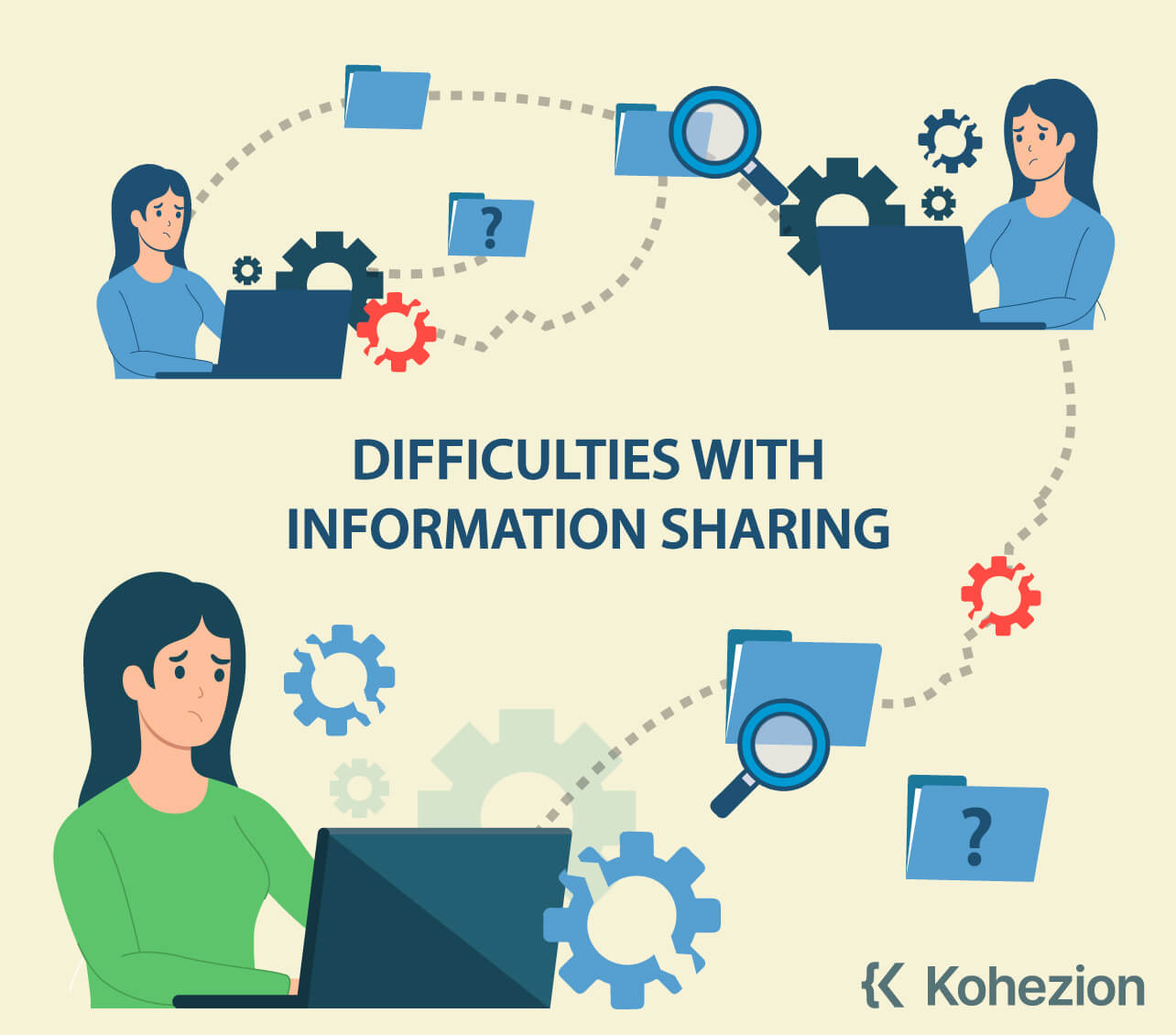
3. Inefficient Workflow Management
Disjointed and non-centralized tools can lead to inefficient workflow management, causing various communication and performance issues across departments. For example, marketing may route leads in one tool, while sales and customer service build territories in another, leading to miscommunication and data silos. This can result in reduced productivity, sales downtime, and misalignment between strategy and operations.
4. Reduced Productivity
The use of disjointed and non-centralized tools can lead to reduced productivity, creating communication and performance issues within various departments. When employees are forced to switch between multiple apps and websites, it takes a toll on their cognitive abilities and increases stress levels. This can lead to a decrease in focus and efficiency, resulting in tasks taking longer to complete.
The technical complexity of managing multiple-point tools can also create a fragile ecosystem that is difficult to manage. This can lead to reduced productivity, as changes that require IT support take valuable resources away from other priorities. Sales downtime can also occur, as seemingly small system changes can take a long time to implement.
5. Increased Frustration Level
When organizations use multiple disjointed tools for communication and performance tracking, it can lead to increased frustration levels for various departments. For example, marketing may use one tool to track leads while sales use another to manage territories. This can create confusion and miscommunication when data is not consistent across departments. Sales reps may waste time chasing leads that have already been contacted by marketing, or marketing may send leads to the wrong salesperson due to outdated or incomplete information. These issues can cause delays, missed opportunities, and decreased productivity. When employees are frustrated with the tools they are required to use, they may become disengaged and less motivated to perform their best work.
6. Increased Risk of Errors
When different departments within an organization use disjointed and non-centralized tools, it can increase the risk of errors and miscommunications. Also, different naming conventions used across properties, fields, and values can contribute to confusion and inefficiencies, which can impact reporting. This can have a ripple effect on daily operations, leading to delays in projects, poor customer experiences, and decreased productivity.
7. Reduced Revenue predictability
Fragmented and non-centralized tech stacks can lead to inconsistent messaging, disjointed data, and a lack of synergy between different teams, ultimately reducing revenue predictability. Revenue Operations (RevOps) teams are particularly affected by this issue, with 56% of RevOps leaders viewing tool consolidation as a priority. Too many point tools in revenue teams can result in technical complexity, reduced efficiency, and difficulty in managing updates and changes. This can lead to challenges in forecasting, analyzing data, and making informed decisions, ultimately impacting revenue predictability.
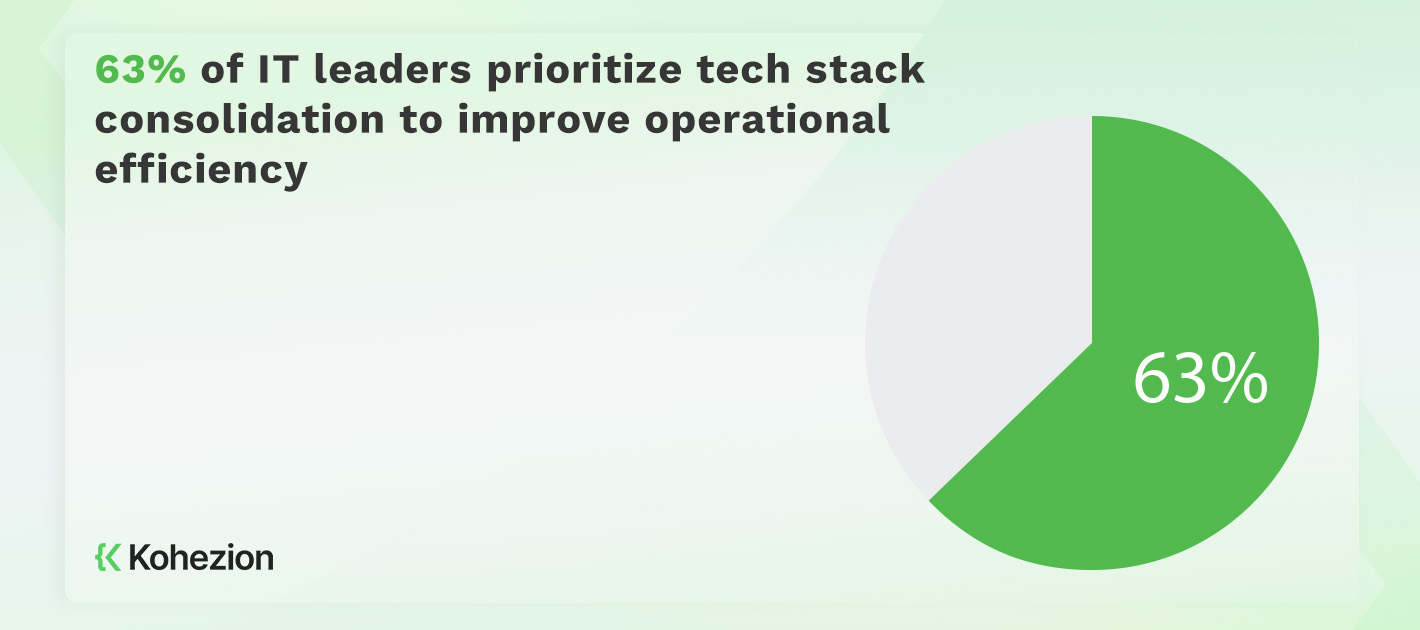
What tools can be used to become a centralized, single source of truth in an organization?
1. Low Code Database
Using low-code development database tools can help organizations achieve a centralized, single source of truth by simplifying the process of building and managing databases. These tools allow users to create and customize databases with little to no coding required, reducing the need for specialized IT teams and streamlining development timelines.
Popular low-code database tools include Airtable, Knack, and Zoho Creator, all of which offer drag-and-drop interfaces, pre-built templates, and integrations with other tools such as Zapier and Salesforce. These tools can be integrated into an organization's tech stack by connecting with other tools through APIs or using pre-built integrations.
2. No code database
A no-code online database allows organizations to create a centralized, single source of truth for their data without requiring extensive technical expertise. With tools like Kohezion, users can easily create custom databases to store and organize information such as project details, customer data, and inventory.
These databases can be accessed and updated by multiple team members, ensuring everyone is working with the most up-to-date information. Additionally, no-code databases offer customizable views and integrations with other tools, such as Slack and Zapier, to streamline workflows.
3. CRMs
A CRM system can serve as a centralized, single source of truth in an organization by consolidating all customer data and interactions in one place. This allows for easy access to customer information, enabling a more personalized and efficient customer experience. Key features of a CRM that make it an effective tool for consolidating customer information include contact management, sales pipeline tracking, and reporting and analytics.
To implement a CRM system, a company can evaluate its current tech stack and identify redundancies, then choose a CRM solution that meets its needs and integrates with other tools such as communication and document management tools.
4. Email Marketing Tools
To become a centralized, single source of truth in an organization, email marketers should consider consolidating their tech stack and integrating with email marketing tools including ESPs, email address validation tools, personalization tools, A/B testing tools, and other marketing automation platforms. The ultimate goal is to unify everything around email and eliminate unnecessary redundancies, inefficiencies, and disparate systems.
Key features to look for in a unified marketing platform include a centralized "source of truth" for customer data, a single, unified view of each customer for effective segmentation and personalization, and the ability to create an omnichannel experience with analytics for performance insights.
5. Marketing Automation Tools
Marketing automation tools can help an organization become a centralized, single source of truth by eliminating manual and redundant processes, consolidating disparate products into one unified platform, and providing a single view of each customer. By streamlining systems and reducing the total cost of ownership, marketing automation tools can make the sales process more efficient and gain invaluable insights about customers. Key features of a unified marketing platform include centralized customer data, omnichannel communication, automation, and analytics across channels.
However, potential challenges may arise when implementing marketing automation tools, such as the need for a comprehensive evaluation of current systems and the selection of the right partner who can help achieve the organization's goals. To overcome these obstacles, it is important to seek out a system that offers a centralized "source of truth" and to ensure that every channel can "communicate" with one another to offer a connected customer experience.
6. Custom-developed Solution
Custom-developed solutions can be used to become a centralized, single source of truth in an organization by providing a tailored solution that meets specific business needs. These solutions can be designed to integrate with existing systems, ensuring that data is synchronized across the tech stack and preventing information silos. By consolidating multiple tools into a single platform, businesses can streamline their operations, reduce costs, and increase efficiency.
However, there are also potential drawbacks to using custom solutions. They can be expensive and time-consuming to develop and may require ongoing maintenance and support. Additionally, there may be challenges during implementation, such as ensuring compatibility with existing systems and workflows, as well as training employees to use the new solution.
7. An ERP platform
An ERP platform can serve as a centralized, single source of truth in an organization by consolidating data and processes across various departments and teams. By integrating all business functions, an ERP platform ensures that all stakeholders have access to the same data and information, which helps to eliminate data silos and inconsistencies. This leads to improved decision-making and increased efficiency.
The benefits of using an ERP platform for tech stack consolidation include reduced costs, improved security, and increased automation. To implement an ERP platform, first identify your business needs and choose an ERP system that aligns with those needs. Next, they should plan and execute the implementation process, which involves configuring the system, migrating data, and training users. Ongoing maintenance and support are also critical to ensure the ERP platform remains effective and efficient.
Start building with a free account
Frequently Asked Questions
Tech stack consolidation is the process of streamlining multiple tools and platforms into a more manageable and cohesive technology suite. It is important in modern software development as it can lead to significant cost savings, increased productivity, and improved security.
During a tech stack consolidation, companies typically consolidate multiple tools and platforms into a unified system. This process involves bringing together various types of data, including customer data, financial data, and operational data. The specific data points that are typically consolidated during a tech stack consolidation may include:
- Customer information, such as contact details, purchase history, and preferences.
- Financial data, including revenue, expenses, and budget information.
- Operational data, such as project management, task tracking, and employee performance metrics.
Tech tools can significantly aid in the process of tech stack consolidation by simplifying processes, lowering training and onboarding expenses, and reallocating resources. Some examples of tools that can help with the consolidation process include pipeline orchestration solutions like continuous deployment, automation tools, and integrated development environments (IDEs). These tools contribute to creating a centralized "source of truth" by streamlining processes, reducing complexity, and providing a consistent user experience.
Implementing a Tech Stack Consolidation strategy can be a challenging task for organizations. One of the main challenges is the potential impact on employee workflows. Employees may need to learn new tools and processes, which can lead to a temporary decrease in productivity. Another challenge is the difficulty of migrating data from multiple systems into a single consolidated system. This process can be time-consuming and complex, requiring cross-functional collaboration between IT, operations, and other departments. Also, IT leaders must ensure that the consolidation does not compromise crucial functionalities by over-consolidation.
A suitable security stack for this process would include solutions that provide comprehensive coverage while also being cost-effective. This can be achieved through the use of XDR (Extended Detection and Response), which consolidates multiple security technologies into a unified platform, providing a centralized view of security events and simplifying incident response. XDR solutions typically include endpoint detection and response (EDR), network detection and response (NDR), and cloud workload protection platforms (CWPP) in a single solution.


